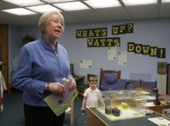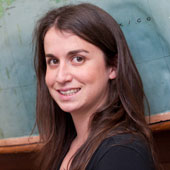Tuesday, February 4
| 10:00-11:00 a.m. | "Proof," Willamette Theater Department Presentation [Deborah Ehlers], Ford 122 
FEBRUARY 13 – MARCH 1, 2014 By: David Auburn DESCRIPTION On the eve of her 25th birthday, Catherine, a troubled young woman, has spent years caring for her brilliant but unstable father, a famous mathematician. Now, following his death, she must deal with her own volatile emotions, the arrival of her estranged sister, Claire, and the attentions of Hal, a former student of her fathers’ who hopes to find valuable work in the 103 notebooks her father left behind. During the long weekend that follows, a burgeoning romance and the discovery of a mysterious notebook draw Catherine into the most difficult problem of all: How much of her father’s madness – or genius – did she inherit? Director Susan Coromel and some of her theater students will present to ICL. They will be introducing us to the play production. |
| 11:00 a.m.-12:00 p.m. | "Experiencing Hubble: Understanding the Greatest Images of the Universe, Lecture 4: The Star Factory inside the Eagle Nebula," Video lecture, Prof. David M. Meyer [Paul Rice], Ford 122 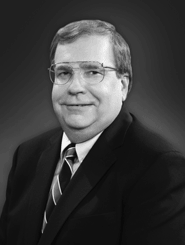
Explore the most iconic Hubble photo of all: the glowing pillars of gas and dust at the core of the Eagle Nebula. Resembling a fantasy landscape, this view shows young stars emerging from their cocoons of gas and dust in an interstellar molecular cloud. |
| 1:00-3:00 p.m. | "Can we learn something by studying speed of movement and walking smoothness in older adults?" Brandi Row Lazzarini [Bill Griffits], Ford 122 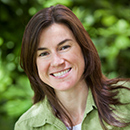
This class session will focus on aspects of function that relate to fall risk in older adults, and how they are measured. We will study the material related to a project conducted by Dr. Brandi Row Lazzarini and her students during the Summer of 2013. We evaluated speed of movement and walking smoothness in older adults. We explored whether treadmills are fair to use to study this aspect of function in seniors. We also pursued the development of a clinically-feasible test of rapid stepping function and control of movement, to determine if it has the potential to add value to functional assessments in the clinic. We will explore our results during this class session.
Prior to that, during the years 2003-6, I completed a Post-Doctoral Research Fellowship at the Center for Studies in Aging, Sunnybrook Health Sciences Center, the Toronto Rehabilitation Institute, and the Health Care, Technology, and Place Interdisciplinary Program, University of Toronto, in Toronto, Ontario, Canada. |
Thursday, February 6
| 10:00 a.m.-12:00 p.m. | "The Oregon Supreme Court," Paul J. De Muniz [Grant Thorsett], Ford 122
The Honorable Paul J. De Muniz was elected to the Oregon Supreme Court in 2000 and served as the court's Chief Justice and administrative head of the Oregon Judicial Department from January 2006 to May 2012. Between 1990 and 2000, he sat on the Oregon Court of Appeals and served as presiding judge on one of the three panels that comprise that body. Prior to ascending to the bench, Justice De Muniz was in private practice for 13 years with the Salem, Oregon, law firm of Garrett, Seideman, Hemann, Robertson and De Muniz P.C., where he specialized in complex criminal and civil litigation, as well as appeals. From 1975 to 1977, he was a deputy public defender for the State of Oregon. Paul De Muniz was raised by his mother in Portland, Oregon, and attended Portland's public schools. After finishing high school, he joined the U.S. Air Force and served a one-year tour of duty in Viet Nam. After his discharge from the service, Justice De Muniz received his bachelor degree from Portland State University in 1972 and his juris doctor from the Willamette University College of Law in 1975. De Muniz was the first Hispanic American elected to statewide office in Oregon. In 2010, Hispanic Business Magazine named him among the 100 most influential Hispanics in America. Today, he sits on the Board of Trustees of Willamette University and the World Affairs Council of Oregon. Justice De Muniz and his wife, Mary, reside in Salem, Oregon, and have three grown children and two grandchildren. |
| 1:00–3:00 p.m. | "A Glimpse Inside The Wonderful World Of Movies," Loretta Miles [Betty Swinkels], Ford 122
Loretta Miles began working at Salem Cinema as a projectionist in 1984, two years after its founding. She purchased it in 1990. In 2009 she relocated the business from SE High Street to a three-screen theater at 1127 Broadway NE. She was one of the founders of the Salem Film Festival. She is responsible for making Salem Cinema the Oregon venue for the Manhattan Short Film Festival. |
Tuesday, February 11
| 10:00 a.m.-12:00 p.m. | "Mars," Irene Konopasek and Hardin King , Ford 122
MARS: Origins and present conditions; Probes and Satellites; Humans on Mars: plans for when and how.
|
| 1:00-2:00 p.m. | "The Story of Human Language Video Series, Lecture 16: 'Dialects—Two Tongues in One Mouth'," Prof. John McWhorter , Ford 122
In most Arabic-speaking countries, the Arabic of public use (the media, speeches, writing) is essentially a different language from the one used casually and learned from parents. This phenomenon is called diglossia and is common worldwide. Swiss German speakers only occasionally see the language they speak on the page, where High German is required. Different languages are also often used in diglossic relationships: the Tanzanian often uses English and Swahili at work and a local native language at home. Diglossia is the template within which 6,000 languages and countless dialects share space on a planet with only 200-odd nations. The nonstandard dialect and the standard one often coexist in a structured relationship in a society. The standard or “high” (H) variety is used in formal situations, while the nonstandard or “low” (L) variety is used in informal ones. This is called diglossia, Greek for “two tongues.” The presentation will be hosted by George Burt. |
| 2:00–3:00 p.m. | "Willamette Academy, the Youngest at Willamette University," by Michele Gray [Bill Griffits], Ford 122
Though our primary goal is to help students to graduate from high school and attend college, students gain so much more from the Academy program: confidence, self-awareness, life skills, leadership skills, and a sense of responsibility to their community. To date: 99 percent of Willamette Academy students have graduated from high school and 95% have gone on to the college of their choice. Please join us to meet our students and learn more about Willamette Academy. For more information about Willamette Academy visit: http://www.willamette.edu/academy or call 503-370-6085. Michele Gray is the Executive Director of Willamette Academy. |
Thursday, February 13
| 10:00 a.m.-12:00 p.m. | "Willamette University’s Archives and Special Collections," Mary McRobinson [Judy Heltzel], Ford 122
Mary McRobinson is the University Archivist at Willamette University, a position she has held since March 2006. Before joining Willamette University, Mary was employed for five years at the University of Georgia, where she was Head of the Descriptive Services Unit at the Richard B. Russell Library for Political Research and Studies. She received her M.L.I.S. with an emphasis in archival enterprise from the University of Texas-Austin and her B.A. in history from the University of Nebraska-Omaha. |
| 1:00-2:00 p.m. | "How to Listen to and Understand Great Music, Video Lecture: Classical-era Form --- Sonata Form, part 1," Dr. Robert Greenberg, Ford 122 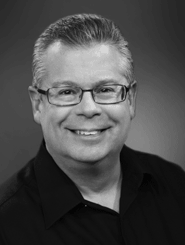
DISCLAIMER from Solveig Holmquist Classical-era Form --- Sonata Form, Part I |
| 2:00–3:00 p.m. | "How to Listen to and Understand Great Music, Video Lecture: Classical-era Form --- Sonata Form, part 2," Dr. Robert Greenberg, Ford 122
|
Tuesday, February 18
| 10:00 a.m. - 12:00 p.m. | "Non Beneficial Care" and "Withholding vs. Withdrawing Treatment," Hong Lee [Peter Rasmussen], Ford 122
The First Hour: Non Beneficial Care The Second Hour: Withholding vs. Withdrawing Treatment Education |
| 1:00-3:00 p.m. | "The Origin of the Iliad: A Greco-Anatolian Enterprise Constructing a Shared Past,", Mary Bachvarova [Kasia Quillinan], Ford 122
There are two scholarly approaches to the origin of the Iliad. The first asks: Does the Iliad represent a distant memory of a historical event? Once deciphered in the 1920's, Hittite administrative documents from the Bronze Age capital Hattusa in central Anatolia referring to Alaksandu of Troy (Wilusa) and Achaeans (men of Ahhiyawa) seemed to support those who saw a historical kernel in the Iliad. The other approach examines the literary antecedents of the Iliad, searching out parallels to Near Eastern myth and epic, with a focus on Mesopotamian sources, particularly the Epic of Gilgamesh. I present a new view to the origin of the Iliad by combining the two approaches, and re-orienting the discussion towards historiography – the creation of a narrative of the distant past – instead of historical "fact." I argue that only in the context of intense interaction between Greek-speakers and Anatolians at close quarters, in Ionia and Aeolis, could the Trojan War become such an important touchstone. Based on the archaeological and linguistic evidence I argue for a rather narrow date for the creation of Greek legend of the Trojan War, 1160-1050 BCE. Recent archaeological studies of Early Iron Age Troy show that at this time it was already a place for ritual activity, associated with ancestor veneration (hero cult) directed towards Late Bronze Age ruins. The archaeological evidence can be combined with Hittite rituals, myths, and legends that show how Bronze Age Anatolians positioned themselves in the flow of world history by adopting legends about the destruction of famous cities, and the voyages of the Akkadian conqueror Sargon the Great and Gilgamesh, and deploying them in necromantic rituals calling on powerful dead heroes. Thus, Homer's work represents the culmination of an Anatolian enterprise of creating and making use of a mythical past, into which the Greeks inserted themselves at the beginning of the Early Iron Age. Mary Bachvarova is Assistant Professor, Classical Studies Progam at Willamette University Her Bachvarova's bio. Education |
Thursday, February 20
| 10:00 a.m.-12:00 p.m. | "Great Decisions: China's Foreign Policy," Greg Felker [J. Flaming], Ford 122
Great Decisions guest presenter is Willamette Professor Greg Felker.
Education Ph.D. - Princeton University |
| 1:00-3:00 p.m. | "The Ness of Brodgar: A Key to Understanding the Neolithic of the British Isles," Scott Pike [Judy Heltzel], Ford 122
The archaeological excavations at the Ness of Brodgar, on the Orkney Islands in northern Scotland, are among the most important active excavations in the British Isles, if not the world. Covering 2.5 hectares, the site sits on a narrow spit of land that acts as a natural causeway between the standing stone circles of the Ring of Brodgar and the Stones of Stenness. Predating the more famous Stonehenge 550 miles to the south, the phenomenal preservation of the Ness of Brodgar is allowing archaeologists to investigate what appears to be a series of non-domestic temple-like structures. The large buildings are too large for domestic spaces and researchers are at a loss as to how the buildings were used. This presentation will place the Ness of Brodgar in its regional archaeological context. We will take a pictorial tour of the important Neolithic sites on Orkney and then focus on the Ness of Brodgar itself. We will take a look at the site and structures uncovered to date as well as discuss hypothesis as to the site's function and purpose. The talk will also highlight Willamette’s involvement with excavations including our own archaeological field school and student research. Education Courses/Programs Professional Interests |
Tuesday, February 25
| 10:00 a.m.–12:00 p.m. | Title TBA, Karen Landers M.D., Marion County Health Department [Peter Rasmussen], Ford 122 Description TBA Preventive Medicine Physician at the Marion County Health Department Preventive medicine physicians focus on preventing health conditions from developing, rather than the treatment of a disease. They can operate at the public health and individual patient levels. Preventive medicine treatments include regular physical examinations, annual screening tests, immunizations and sanitation recommendations, such as hand washing. High-risk patients, such as those with family histories of certain diseases, may receive additional or more frequent screenings for early disease detection. On a public health level, a preventive medicine specialist may focus on food and water safety, insect control or hygiene. Education and Medical Training Certifications & Licensure Awards, Honors, & Recognition |
| 1:00-3:00 p.m. | "Classic-era Forms," Sean Paul Mills [Solveig Holmquist], Ford 122
QUICK FACTS: BIOGRAPHICAL SKETCH: Sean is blessed to be the caretaker of a beautiful cello made by Otto Seifert in 1924. |
Thursday, February 27
| 10:00 a.m.–12:00 p.m. | "Salem Public Library: Past, Present, Future," B J Toewe [Paul Rice], Ford 122
B.J Toewe has a B.S. from Drexel University with a double major in early childhood education and home economics education but student teaching in both areas led her to working with preschoolers. She taught preschoolers in day care centers for two years in low income areas in North Philadelphia and outside Trenton, NJ. She went to Rutgers University and received a Masters in Library Science with certification to be either a school librarian or a children's librarian in a public library. She was hired to be the Children's Library Coordinator for Hunterdon County Library in Flemington, N.J., where she stayed for six years. Moved to Salem, OR. in 1982 to be the Children's Services manager at Salem Public Library. Served in this capacity until 2009, when she was asked to be acting-in-capacity Library Administrator. This position became permanent in 2010. She has been active in both the NJ Library Association and the Oregon Library Association, serving on both association boards at different times. In OLA, she has twice been elected to be the Youth Services Division Chair, had two terms on the Legislative Committee, and several years on the Public Relations committee. She was a founding member of the OLA Young Adult network, which focuses on improving library services to teens. Was awarded the OLA Evelyn Sibley Lampman Award in 1990 (presented annually "in recognition of a significant contribution to the children of Oregon and the Pacific Northwest in the fields of literature and/or library services"). Also won the 2005 OLA Distinguished Service Award (in recognition of exceptional service over a period of years). Both awards were awarded to her by her peers in this profession. |
| 1:00-3:00 p.m. | “Climate Change - Fact or Fiction,” Kathie Dello [Gary Beck], Ford 122
The old saying goes, “everybody talks about the weather but nobody does anything about it.” Well, there are those who say we really have been doing something and it’s not good! By this time, most of us have either taken a stance on the question of whether humans are responsible for acceleration in the rate of change in the climate or that it is just a normal cycle and we don’t need to be concerned. Unfortunately, most of us have based our opinions on either hopeful thinking or incomplete, or worse, bad information. Today we are fortunate to hear a summary of current research in what may well be one of the most important issues facing mankind. Associate Director of OCCRI (Oregon Climate Change Research Institute); Deputy Director, Oregon Climate Service Education |


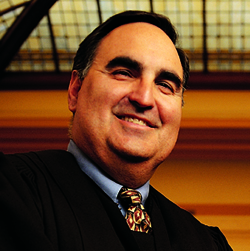 Paul De Muniz was chief justice of the Oregon Supreme Court from 2006 through 2012. As the head of Oregon's judicial branch of government De Muniz was responsible for the administration of Oregon's courts. De Muniz will discuss his tenure as chief justice, the current state of Oregon's courts, and what should be expected of Oregon's court system in the future.
Paul De Muniz was chief justice of the Oregon Supreme Court from 2006 through 2012. As the head of Oregon's judicial branch of government De Muniz was responsible for the administration of Oregon's courts. De Muniz will discuss his tenure as chief justice, the current state of Oregon's courts, and what should be expected of Oregon's court system in the future.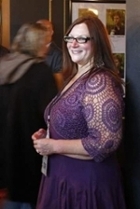 Local entrepreneur, Loretta MIles, will discuss the current state of film as seen through the eyes of a theater owner. Ms. Miles, owner and operator of Salem Cinema, will discuss her passion driven business and give a true insiders peek into the inner workings of owning an independent movie theater in today's rapidly changing industry.
Local entrepreneur, Loretta MIles, will discuss the current state of film as seen through the eyes of a theater owner. Ms. Miles, owner and operator of Salem Cinema, will discuss her passion driven business and give a true insiders peek into the inner workings of owning an independent movie theater in today's rapidly changing industry.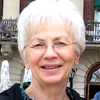
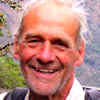
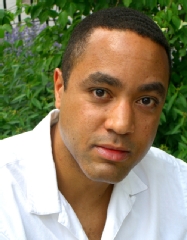
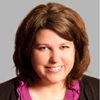 For over ten years, Willamette Academy at Willamette University has been working to help local students achieve their dream of becoming the first person in their families to attend college through an after-school, weekend and summer program. Willamette Academy provides support, tools and resources to students and their families, so that promising young leaders who face innumerable barriers to success can truly achieve their potential.
For over ten years, Willamette Academy at Willamette University has been working to help local students achieve their dream of becoming the first person in their families to attend college through an after-school, weekend and summer program. Willamette Academy provides support, tools and resources to students and their families, so that promising young leaders who face innumerable barriers to success can truly achieve their potential.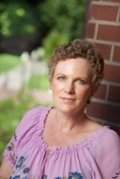 What do the following individuals have in common: an 1868 Willamette alum, teacher, and mother; a foreign news correspondent expelled from Russia, Germany and Italy; the first woman elected as Oregon's Secretary of State; and a Salem photographer who gained recognition when named an associate in Alfred Stieglitz's famed Photo-Secession. Their personal manuscript collections can all be found in Willamette University's Archives and Special Collections. Come learn about the surprising collections housed in the Mark O. Hatfield Library.
What do the following individuals have in common: an 1868 Willamette alum, teacher, and mother; a foreign news correspondent expelled from Russia, Germany and Italy; the first woman elected as Oregon's Secretary of State; and a Salem photographer who gained recognition when named an associate in Alfred Stieglitz's famed Photo-Secession. Their personal manuscript collections can all be found in Willamette University's Archives and Special Collections. Come learn about the surprising collections housed in the Mark O. Hatfield Library.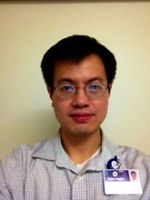
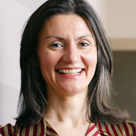
 China has gone to great lengths to emphasize the “peaceful” nature of its meteoric rise. Yet few dispute that China is the dominant regional power in Asia – and in recent years Beijing began to flex its muscles regionally in order to advance its strategic interests. What does the rapid rise of this new superpower mean for other countries in the region, and are there potential points of conflict with the U.S. as it “pivots” to Asia?
China has gone to great lengths to emphasize the “peaceful” nature of its meteoric rise. Yet few dispute that China is the dominant regional power in Asia – and in recent years Beijing began to flex its muscles regionally in order to advance its strategic interests. What does the rapid rise of this new superpower mean for other countries in the region, and are there potential points of conflict with the U.S. as it “pivots” to Asia?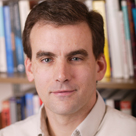 Professor Felker joined Willamette University in 2005 after teaching in the Division of Social Sciences at the Hong Kong University of Science & Technology and as a visiting faculty member of the Department of Government & Politics at the University of Maryland, College Park. He received his Ph.D. and MPA from the Woodrow Wilson School of Public & International Affairs at Princeton University, and his B.A. from the University Professors Program at Boston University. He teaches courses in Asian and International Politics, including the politics of development and macro-social change, technology, globalization, and international relations and political economy, and has published in these fields. From 2007-2009 he served as Chair of the Malaysia / Singapore / Brunei Studies Group of the Association for Asian Studies.
Professor Felker joined Willamette University in 2005 after teaching in the Division of Social Sciences at the Hong Kong University of Science & Technology and as a visiting faculty member of the Department of Government & Politics at the University of Maryland, College Park. He received his Ph.D. and MPA from the Woodrow Wilson School of Public & International Affairs at Princeton University, and his B.A. from the University Professors Program at Boston University. He teaches courses in Asian and International Politics, including the politics of development and macro-social change, technology, globalization, and international relations and political economy, and has published in these fields. From 2007-2009 he served as Chair of the Malaysia / Singapore / Brunei Studies Group of the Association for Asian Studies.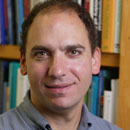
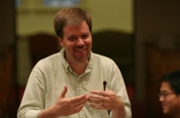 Sean Paul Mills, Conductor of Salem Philharmonia will discuss and demonstrate Classic-era forms, and particularly the Mozart Piano Concerto #24. This concerto will be presented in the Philharmonia’s March concerts. The concerts will be in two Salem venues.
Sean Paul Mills, Conductor of Salem Philharmonia will discuss and demonstrate Classic-era forms, and particularly the Mozart Piano Concerto #24. This concerto will be presented in the Philharmonia’s March concerts. The concerts will be in two Salem venues.